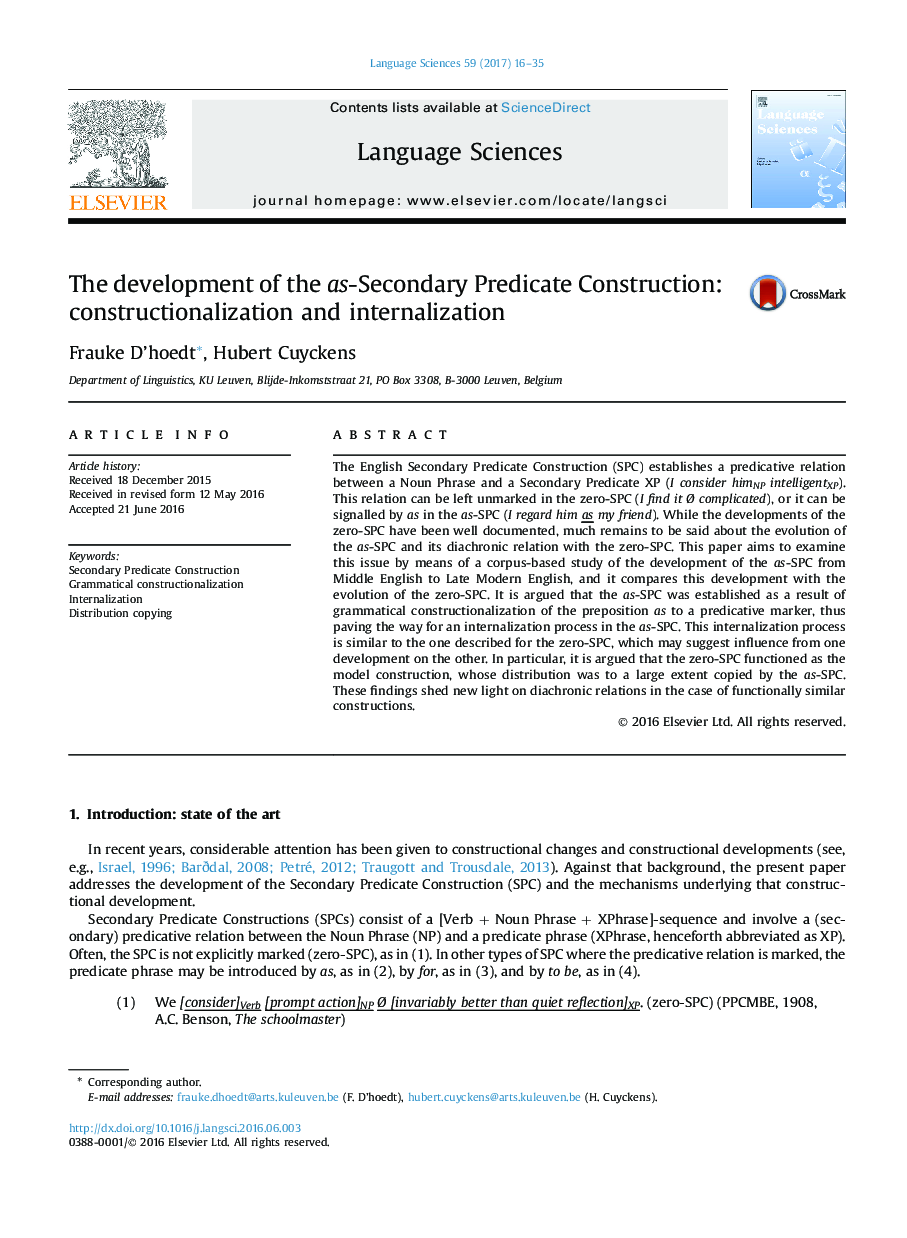| Article ID | Journal | Published Year | Pages | File Type |
|---|---|---|---|---|
| 1102954 | Language Sciences | 2017 | 20 Pages |
•The development of the as-Secondary Predicate Construction (as-SPC) is traced.•The as-SPC has undergone grammatical constructionalization and internalization.•Evidence for distribution copying by the as-SPC from the zero-SPC is given.•The study emphasizes the historical importance of constructional networks.
The English Secondary Predicate Construction (SPC) establishes a predicative relation between a Noun Phrase and a Secondary Predicate XP (I consider himNPintelligentXP). This relation can be left unmarked in the zero-SPC (I find it Ø complicated), or it can be signalled by as in the as-SPC (I regard him as my friend). While the developments of the zero-SPC have been well documented, much remains to be said about the evolution of the as-SPC and its diachronic relation with the zero-SPC. This paper aims to examine this issue by means of a corpus-based study of the development of the as-SPC from Middle English to Late Modern English, and it compares this development with the evolution of the zero-SPC. It is argued that the as-SPC was established as a result of grammatical constructionalization of the preposition as to a predicative marker, thus paving the way for an internalization process in the as-SPC. This internalization process is similar to the one described for the zero-SPC, which may suggest influence from one development on the other. In particular, it is argued that the zero-SPC functioned as the model construction, whose distribution was to a large extent copied by the as-SPC. These findings shed new light on diachronic relations in the case of functionally similar constructions.
